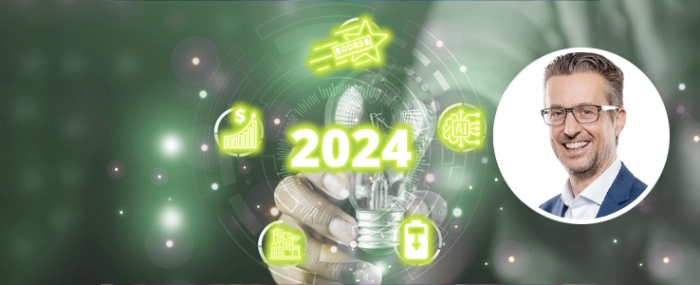
Memory trends: What’s hot in semiconductor memory in 2024
If 2023 has proven one thing, then that semiconductor memory is not for the faint of heart. 2024 promises to get a lot better for memory manufacturers but it will also be a bit tougher for OEMs and IDMs who need to say goodbye to the bargain prices from 2023. What else will we see? Here are the top 5 memory trends for 2024.
Author: Marco Mezger, Executive Vice President and COO of Neumonda
Memory Prices are going up
This shouldn’t come as a surprise as analysts have projected an increase in prices ever since the second half of 2023. Gartner predicts a growth in memory of a staggering 66.3%. This figure is a combination of the growth rates of NAND (+49.6%) and DRAM (+88%).
TrendForce is a bit more conservative and predicts a 20% growth for DRAM, and for NAND even a price increase of 50% or more so manufacturers become profitable again.
DDR5 will become mainstream
The annual growth rate for average DRAM capacity is projected at approximately 12.4%. One of the reasons is Intel’s new Meteor Lake CPUs that will go into mass production in 2024. This platform relies exclusively on DDR5 and LPDDR5. For this reason, major semiconductor makers are increasing their available capacity for DDR5 memory. This indicates that DDR5 will become mainstream in the second half of 2024. And it’s only a matter of time until DDR5 will become a prominent memory technology in industrial and embedded designs.
AI drives memory demand
The introduction of Chat GPT has taken the world by storm with the effect that generative AI applications are boosting the demand for AI servers. Trendforce estimated that more than 1.2 million AI servers will go live by the end of 2023. That’s a year-over-year increase of 37.7%. Trendforce also expects this number to grow 38% in 2024 to the extent that AI servers will make up 12% of all server shipments.
While some might think this is a short-term buzz, a recent survey from Gartner found that only 2% of enterprise leaders had no plans to experiment with generative AI. Almost 70% believed the benefits of GenAI outweighed the risk.
HBM stands out as a critical DRAM product for AI. With the growing complexity of training models and applications, demand for HBM is expected to skyrocket. As the average unit price of HBM is several times higher than other DRAM products, it’s projected that in 2024, HBM is poised for an annual growth rate of 172%.
Low Power consumption becomes a key focus
The downside of new technologies like generative AI is that they require a lot of energy. The research found that generating a single image with AI takes as much power as charging a phone. Other researchers even see the current AI technology using 29.3 terawatt-hours per year, as much as the whole country of Ireland.
Apart from AI, IIoT (industrial internet of things) and the trend towards more data processing and intelligence at the edge also require low-power components for an extended battery life. For this reason, low-power memory products like LPDDR4 and LPDDR5 are trending in 2024.
Sustainability in manufacturing is a top priority
Power consumption is only one piece of the puzzle towards more sustainability. As ESG (Environmental, Social, Governance) laws across the world are getting tougher it’s increasingly important for manufacturers to transition towards greener production as well as sustainable products.
Memory manufacturers are working towards zero-emission production and are constantly working on methods to reduce water and energy consumption, like with lower temperatures in the soldering process.
Also, the reduction of harmful materials in memory products is a key focus. As exemptions from ROHS and REACH directives are phasing out even for older generations and legacy products. So apart from completely lead-free DDR5 modules introduced in 2023, we will also see lead-free versions of the complete spectrum of DRAM modules in 2024, even down to DDR1 modules.
Neumonda was founded with the ambition to build the most comprehensive memory application expertise under one roof by combining memory distribution, product manufacturing and memory IP.
